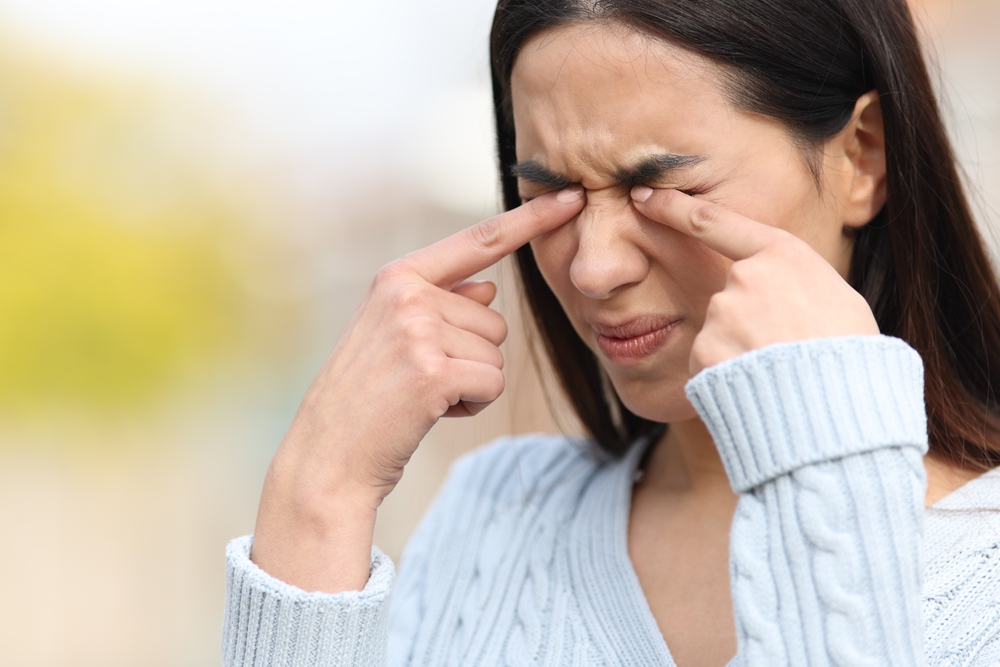
Many people worldwide suffer from the discomfort of dry eye. It occurs when the eyes do not produce adequate tears or when tears evaporate too quickly. Experiencing this can make you wonder if the condition is curable.
Understanding Dry Eye Syndrome
Factors such as age, hormonal changes, and environmental factors can cause dry eye syndrome. It can also be a symptom of an underlying condition like rheumatoid arthritis.
Dry eye symptoms can vary but may include the following:
Burning or stinging
Excessive tearing
Redness
Eye fatigue
Blurred vision
Sensitivity to light
Artificial Tears
Artificial tears are among the most used treatments for dry eyes. They lubricate the eyes and help relieve dryness and discomfort. Artificial tears comprise different types like lubricating, rewetting, and specialty tears.
Lubricating tears provide long-lasting relief for dry eye symptoms while rewetting drops help keep the eyes moist throughout the day. Specialty tears are for specific types of dry eye, such as those caused by allergies or contact lens wear.
Lifestyle Changes
Making some lifestyle changes can help manage dry eye symptoms. Windy or dry environments can exacerbate these symptoms, so avoiding such environments or protecting your eyes with wraparound goggles or sunglasses can help.
Staring at the computer for long hours can dry the eyes. Prevent this by taking regular breaks to rest your eyes and blink frequently. Blinking helps lubricate and add moisture to the eye surface by spreading a tear film all over the eye.
Staying hydrated keeps the eyes moist and prevents dry eye symptoms, so it is vital to drink plenty of water daily. Try drinking at least eight glasses of water every day.
Prescription Medications
Your doctor may recommend prescription medications if over-the-counter treatments are not effective. Anti-inflammatory drugs like corticosteroids can help reduce inflammation and relieve dry eye symptoms. Antibiotics can help if an infection is contributing to your dry eye symptoms. Prescription eye drops may help raise tear production or improve the quality of your tears.
Punctal Plugs
Punctal plugs can help slow the drainage of tears. They are tiny devices placed in the tear ducts. They help keep the eyes moist and can relieve dry eye symptoms. There are temporary and permanent ones.
Temporary plugs are dissolvable materials and can provide relief for a few days or several months. Permanent plugs are from long-lasting materials like silicone and can relieve dry eye symptoms for several months to years.
BlephEx™
BlephEx is a procedure designed to clean the eyelid margins and remove debris that can contribute to dry eye symptoms. It uses a small handheld device that rotates a soft, medical-grade sponge along the eyelid margins. It helps remove bacteria, debris, and biofilm that can build up on the eyelids and contribute to dry eye symptoms.
iLux®
iLux is a dry eye treatment that uses advanced technology to address the underlying causes of dry eye symptoms. It uses a handheld device that applies heat and pressure to the eyelids, melting hardened oils and allowing them to flow freely again. It helps improve the quality of tears and alleviate dry eye symptoms.
Is Dry Eye Curable?
Dry eye has no cure. However, managing its symptoms is possible through the mentioned treatment options. Treating the condition can prevent infection, corneal damage, or vision loss.
For more about dry eye, visit Nolo Eye Care + Eyewear Gallery at our office in Nolensville, Tennessee. Call (615) 283-7321 to book an appointment today.








